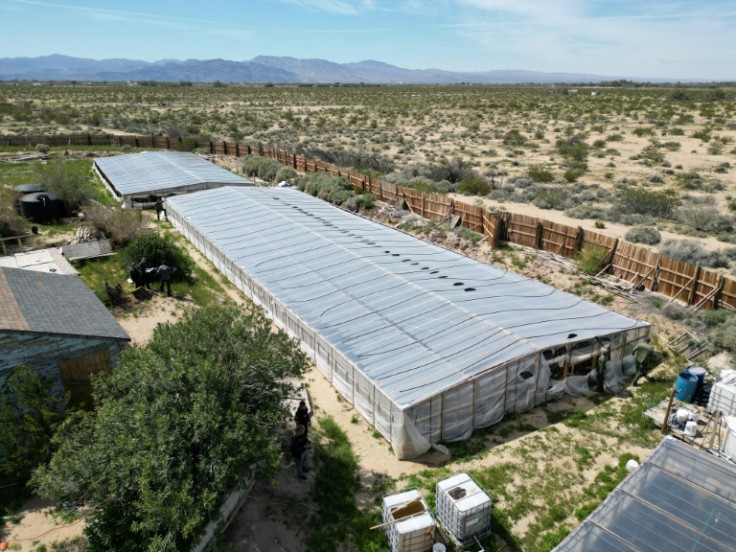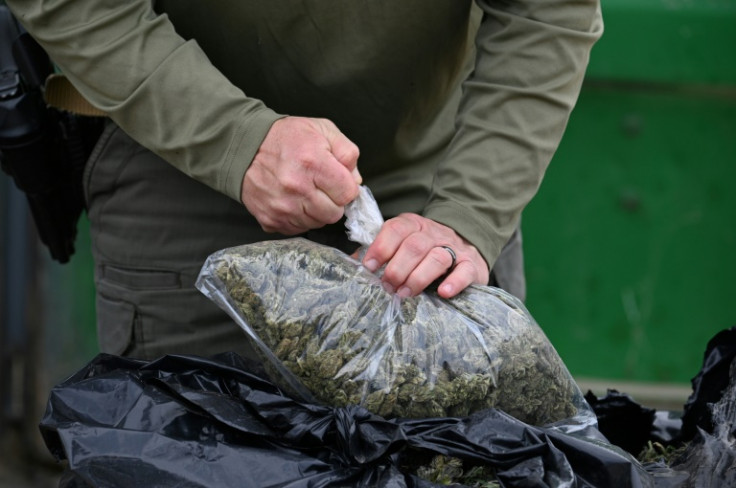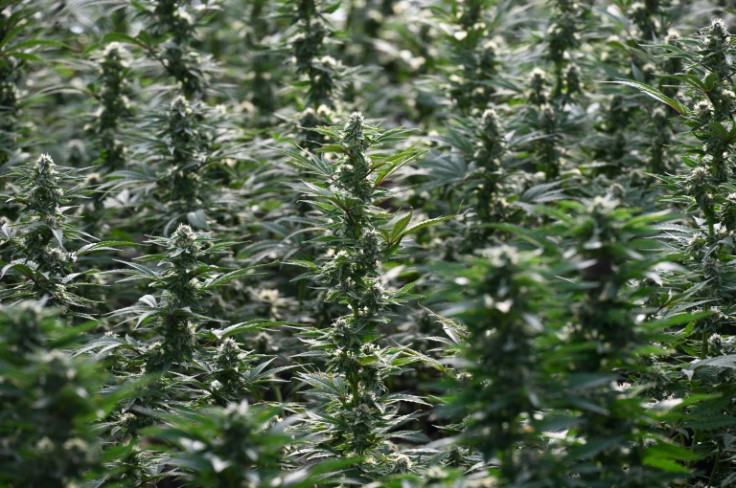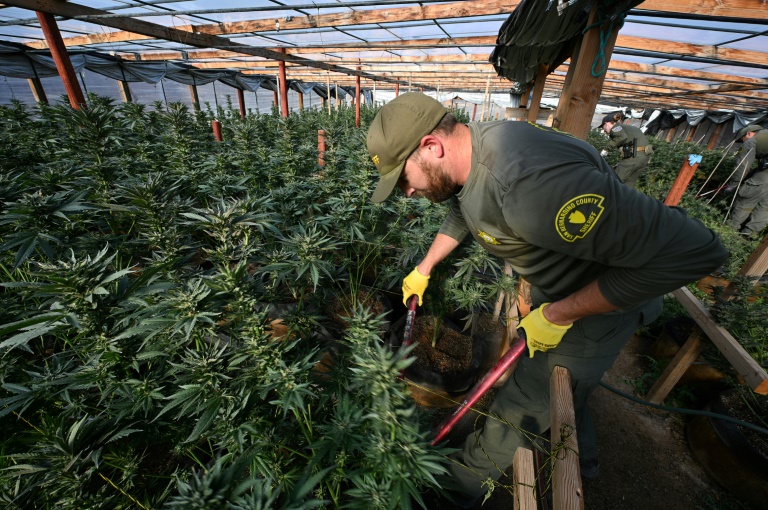“Sheriff’s Department! Search Warrant,” shout armed officers as they enter a property in the heart of the Californian desert, where they soon find hundreds of illegal cannabis plants.
Marijuana was fully legalized in the state in 2016 following a public vote, in a move that proponents said would bring an end to a huge black market and the crime and nuisance associated with it.
In reality, the sector has boomed, with illegal growers tempted by the promise of fat profits for operators who don’t have to worry about licenses, standards and even paying for their water.
“Right around 2016, when laws started to change, there was a huge increase of illegal cultivations,” Sergeant Chris Morsch told AFP during a recent raid.
“The model definitely was not perfect.”
Morsch and his colleagues from San Bernardino County Sheriff’s Department carry out six to ten raids every week, dismantling some of the hundreds of greenhouses that dot the Mojave Desert, east of Los Angeles.
The facilities allow growers to cultivate their crop year-round, with a lucrative harvest every few months.
“This could bring upwards of $600 per pound” (450 grams) in California once the flowers are processed, said Sergeant Chris Bassett, noting that in states where recreational marijuana is illegal “you’re looking at triple the price.”
A few industrial-sized greenhouses can provide a revenue of hundreds of thousands of dollars.
Illegal farms are found throughout California’s varied landscapes, from forests to fields to deserts.
The market share for their produce dwarfs that sold legally, a sector whose sales have stagnated at around $5 billion a year.
“The explosion of the black market, I would say it has a lot to do with the taxation of marijuana in the state of California,” said Bassett.
“Some of these permits to actually cultivate, manufacture, distribute… are upwards of $100,000, which makes it very difficult for someone to actually get into the legal market.”
With such handsome profits to be made, illegal cannabis growth often intersects with more serious crime.
In January, six bullet-riddled bodies were found on a desert road in San Bernardino County, murders that investigators said were linked to the settling of scores among competing growers.
Yet there appears to be scant evidence of the involvement of large-scale organized crime, said Bassett, with many of those caught up being opportunistic criminals from Latin America, Asia or the United States.
“We have people who have been charged with marijuana crimes in the past, and then we have people who have no criminal background whatsoever,” he said.
These groups constantly play cat and mouse with the police — and they’re sometimes one step ahead.
All but one of the five plantations where an AFP team accompanied sheriff’s agents were empty, the producers having fled before the raid.
Only Clarance Joseph was surprised by the armed officers on his land in Newberry Springs, a hamlet off Route 66.
Joseph, an American, told AFP he had been operating since 2017, thanks to an agreement with a group of Laotians: he let them cultivate greenhouses on his property and received 20 percent of the profits.
“That is a big loss,” he sighed as the police hacked at the cannabis plants.
“That’s six months of work… I was just flying under the radar, not stepping on anybody’s toes.”
Joseph will likely be summoned to court where he could expect to be issued with a fine.
Since legalization, the penalties for illegal cultivation have been cut to a maximum $500 fine and six months in prison, although law enforcement officers say jail time is very unusual.
“Unless we find ghost guns or environmental crimes, they’re not risking much,” says Morsch.
“We’re filing reports of hundreds of pages, so seeing sanctions so low can be frustrating.”
Many farms are up and running again shortly after a police raid, with some irrigating their crop with illegally tapped water hydrants or clandestine wells, heaping further pressure on drought-plagued California.
Police searches sometimes turn up harmful pesticides, including substances like carbofuran, a pesticide so toxic that small quantities can kill a large animal.
The Centers for Disease Control and Prevention says ingestion, inhalation or skin absorption affects the central nervous system and can cause diarrhea and convulsions.
“The unfortunate part is they’re spraying it onto the flower itself… which ultimately gets ingested by the consumer,” said Morsch.
“If I was a marijuana smoker, I wouldn’t want to smoke this.”
AFP

AFP

AFP

AFP

AFP







